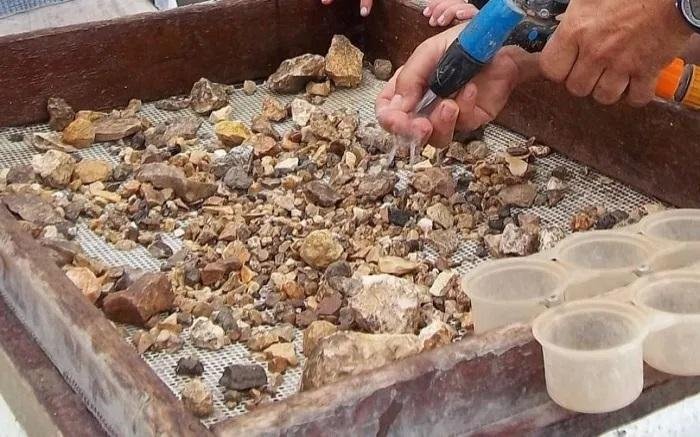According to a new study, ancient silver pieces discovered during excavations in Israel and the Gaza Strip were used as currency in ancient times. Since the silver pieces were most likely made and circulated between 1,700 and 1,600 BCE, during the Middle Bronze Age, they are the oldest form of currency ever discovered in the Levant.
The study, published in the Journal of Archeological Science by a team of Israeli archaeologists from the University of Haifa and Hebrew University, shows that ancient cities in the area had a much more developed long-distance trade relationship and local economy than previously thought.
 Wet-sifting at Temple Mount Sifting Project to discover historical artifacts. Credit: Temple Mount Sifting Project
Wet-sifting at Temple Mount Sifting Project to discover historical artifacts. Credit: Temple Mount Sifting Project
Scholars initially believed that silver currency hoards in the Southern Levant were a phenomenon of the Iron Age (1200-586 BCE.). However, this find offers insight on much earlier commercial and political contacts, dating back to the 17th century BCE. That is about 500 years earlier than the commonly accepted time frame.
The fact that the pieces of silver in the various hoards were purposefully cut to match specific weights revealed the truth.
However, not everyone agrees that this is a new discovery, with some experts noting that previous research has found that silver currency was used in this region during the Middle Bronze Age.
Raz Kletter, an archaeologist at the University of Helsinki who has studied ancient economies and silver hoards from the Levant but was not involved in the new research, told Live Science that scholars had pointed out 20 years ago that silver must have been used for weight economy since the late Middle Bronze period in the southern Levant, based on studies of the same hoards.
Dr. Tzilla Eshel of the University of Haifa told The Times of Israel, “This is the earliest evidence of hoarded silver.”
“This means that we are witnessing first evidence of continuous and long-term metal trade between the Levant and Anatolia 1,700 years before the common era,” Eshel explained.
Because there are no known silver mines in Israel, isotopic testing was used to determine the silver’s origins. The results revealed that they originated in ancient Anatolia or present-day Turkey.
This shows that there was a robust level of trade between the two regions much earlier than previously supposed. Silver must have been an accessible and established part of the trade in Canaan at the time for such imported silver currency to circulate.
More information: Eshel, T., et al. (2023). The earliest silver currency hoards in the Southern Levant: Metal trade in the transition from the Middle to the Late Bronze Age, Journal of Archaeological Science, 149, 105705,





